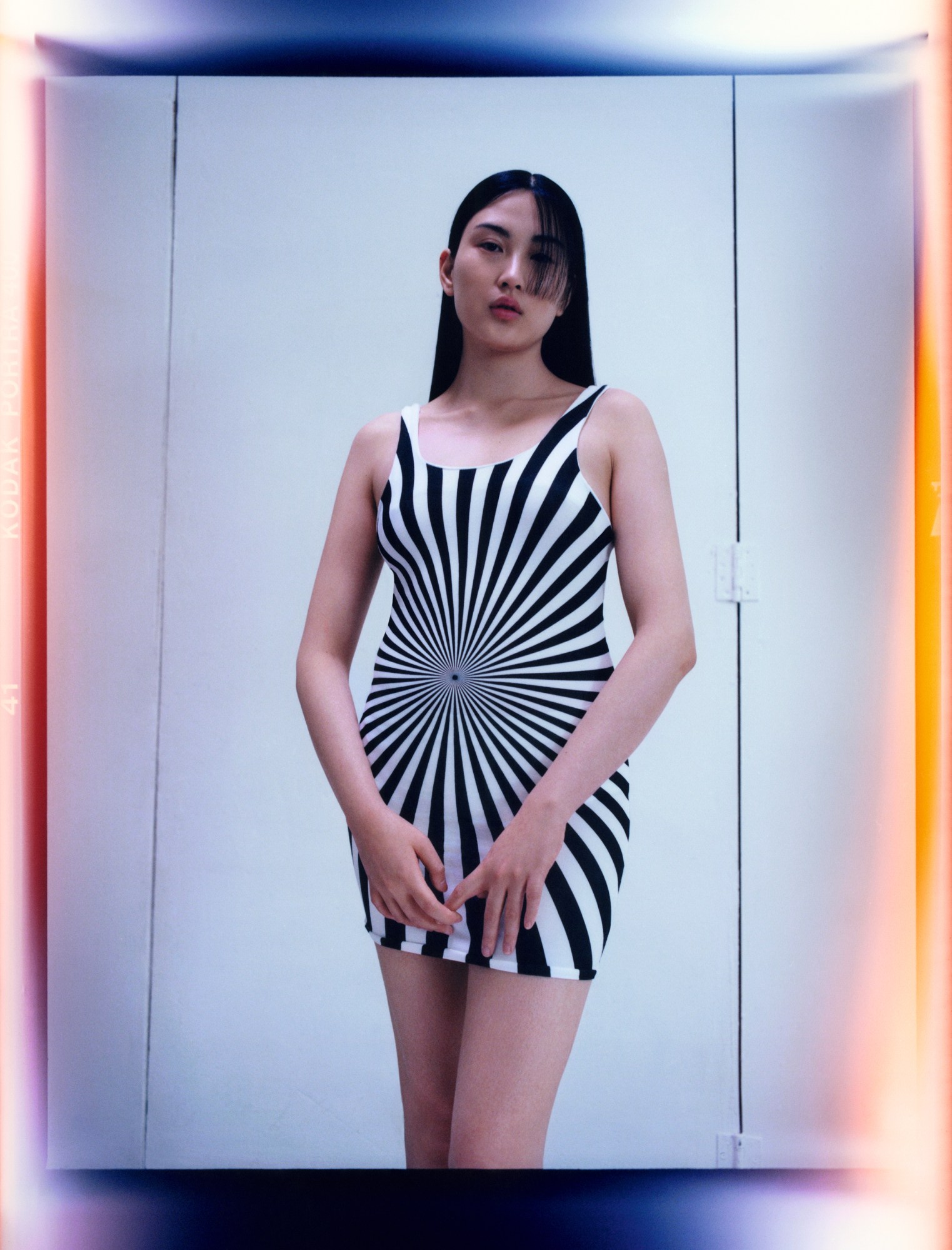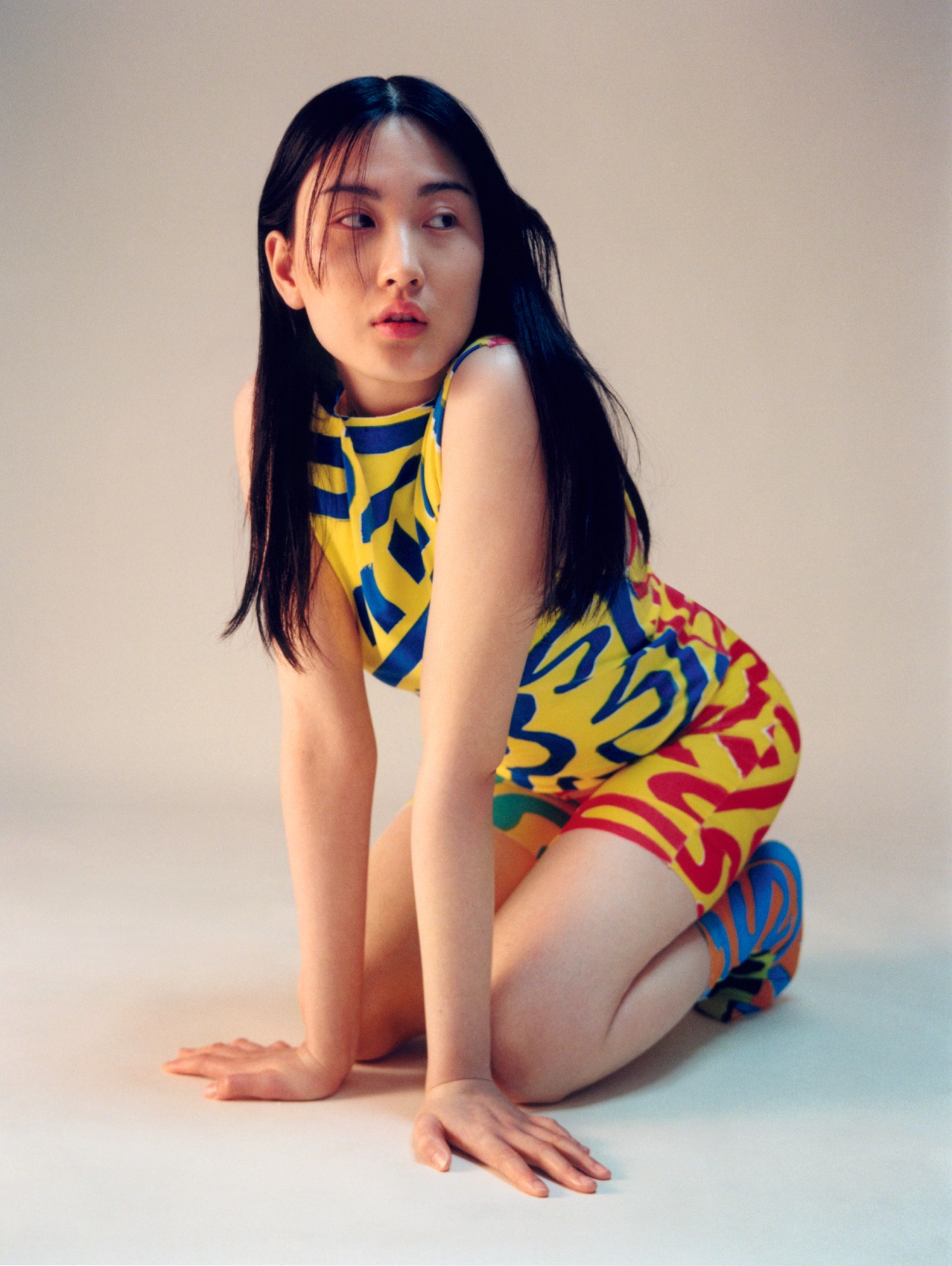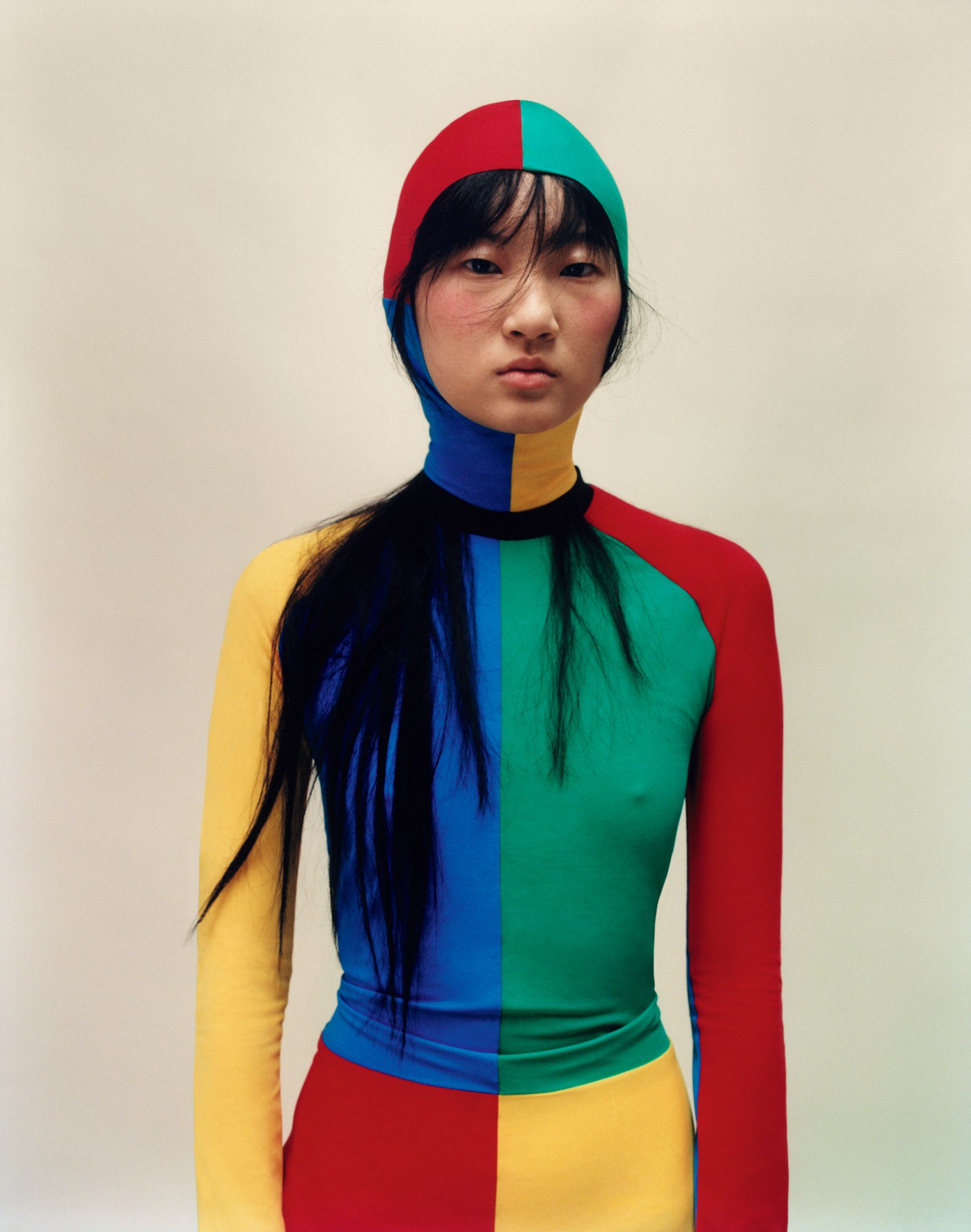This story originally appeared in i-D’s Utopia in Dystopia Issue, no. 362, Spring 2021. Order your copy here.
“I want to speed up,” Ed Curtis said when we first spoke to him last August. An unremarkable statement taken out of context, but this was August 2020, when calls for an imminent slowdown in the fashion industry’s unrelenting cycle of seasons, drops and events around the globe had become something of a mantra for an industry on pause. Speaking to the Peckham-based designer four months later over Zoom as the most tumultuous year of 2020 drew to a close, we were curious to hear whether it was a sentiment he still stuck by? “Yeah, I feel exactly the same!” he says, with a laugh.
Since founding his eponymous label in the summer of 2019, and releasing his first full collection the next, he’s operated as a one-man show from his South London studio, working on a made-to-order and limited-edition basis. The reasons for young, independent businesses like Ed’s to hit pause aren’t quite as justified as they are for the large, unsustainable conglomerates to which such calls are usually, if implicitly, addressed. “Companies who have been producing shit for years – who just burn all their old clothes, for example – slowing down applies to them,” he says. “Because they do need to slow down. But not me.”

The sense of speed he’s talking about has little to do with the jargon-laden conversations around production or scalability. Take a quick look at Ed’s work – Lycra bodysuits, cotton T-shirts and wide-leg canvas trousers, screen-printed with blobs and swirls, Keith Haring-esque squiggles, creepy sneers, and radiating, optical-illusory beams – and it becomes clear that the acceleration he’s after is creative. “That’s what I want to speed up,” he says. “I just feel there’s only so much I can put out right now on my own.”
Unlike with most fashion designers, where the body of work you see on the hanger or page before you can be traced back to a seasonal reference point, you need to venture back a little further to get to the heart of what you see here in the images shot by Maxwell Tomlinson. Seven years, to be precise, to when Ed first took to painting in his spare time away from his 9-to-5 design job at Hillier Bartley. “I loved working there – I stayed for five years – and the people there were great, but it just wasn’t the creative outlet I needed,” he says. “It was right after I’d graduated from London College of Fashion, and I actually only had evenings and weekends to do something creative for myself. To me, that wasn’t really long enough. The process of making clothes was just too long – it requires precision and time. I needed something really immediate, and so I started painting.”

He began by painting giant sheets of paper, then tearing them into scraps, with which he plastered the walls of his bedroom. He quickly realised that, while he may not have been blessed with Michelangelo’s hand, he had a knack for building and layering colour, laying the foundation for the rambunctious hues that mark out his work today. What further fuelled his love affair with painting was exactly what set it apart from fashion and its formal processes. “Working in fashion, everything was so painstakingly researched and referenced. I just never felt like I could do something instinctive. Everything had to come from somewhere,” he says. “I’ve just never worked like that. I want to make work with my hands and just work through that and get to something. The final thing would not really come from sitting down and actually drawing and designing and researching. It would just be about working through it physically and creating that way.”
Bridging the two creative practices that, for a long time, were kept entirely discrete didn’t come naturally for Ed. “When I was painting, I always wanted to be making clothes,” he says, “and I kind of felt like I was going down a different path towards being an artist. It felt like a bit of a shame because I really felt fashion was what I wanted to do. In the back of my mind, I was thinking that I just had to merge the two together at some point. I didn’t want to create garments that looked too conceptual – I wanted them to look familiar, rather than like actual art pieces.”

While he can’t recall a particular eureka moment, one of the most formative steps taken towards achieving his goal came during a stint at Calvin Klein, where he worked on the EST. 1978 label – “basically something in-between 205W39NYC and Calvin Klein Jeans,” Ed says – during the Raf Simons era. “I felt like it finally gave me confidence. We had to generate ideas so quickly, and all the time, which was perfect for the way I like to work. And there wasn’t too much over thinking – it just had to be visually impactful and youth-focused. It made me think about the importance of surface design.”
And despite Ed’s resolutely independent practice, he’s “always really enjoyed the commercial side of fashion,” he says. “It’s the product that grounds me – the process of designing garments. Everything else I do is just a bit chaotic – how I create artworks, for example, is a bit all over the place. But when it comes to designing the garments, it just feels like I can bring it into focus.”

It’s a sense of balance that he’s carried over into his work as an independent designer, tactfully deploying fashion’s product-oriented nature as a conduit for an artistic approach driven by emotional conviction and creative instinct. “I think it’s forced me to try and make stuff that people are actually going to want to buy. I can’t just be in my studio doing whatever I want. I have to try and commercialise it.” That’s not, however, to be read as Ed kowtowing to the fashion system’s rules. Far from it. For one thing, there’s his stubborn reluctance to produce work in line with externally dictated seasons, choosing instead to see each piece he puts out as part of a lifelong Gesamtkunstwerk. “I guess that makes it seem like it’s more of an art practice, in the sense that that’s perhaps how an artist would work on the same kind of painting and perfect it over the course of their whole career. That’s almost how I see my work.”
‘Almost’ is the operative term. Gauging by the designer’s eclectic output thus far, the only thing we can reliably expect from him is anything but the same as what we’ve seen. “When you look at what I make, I guess it isn’t particularly coherent. And I quite like that. There are different elements and levels to my work. I like to mix up all these ideas in the hope that it will create something new,” Ed says. “I don’t really want to be too concrete in stating who I am. I’d rather just confuse people, do something that feels unexpected. It’s more interesting for people looking at it – and it’s more interesting for me as well.”
Credits
Photography Maxwell Tomlinson
Styling Louis Prier Tisdall
Hair Franziska Presche at Together using Oribe Haircare.
Make-up Kristina Ralph Andrews at Future Rep using Nars.
Photography assistance Rory Cole and Ashleigh Ramel.
Styling assistance Marina de Magalhaes.
Hair assistance Aya Kuraoka.
Make-up assistance Jordan Glancy.
Casting Alexandra Antonova at DMCASTING and Sarah Small at Good Catch.
Models Ruoyi at D1LON, Jundan at Storm and Xiaoqiao at Good Catch.
